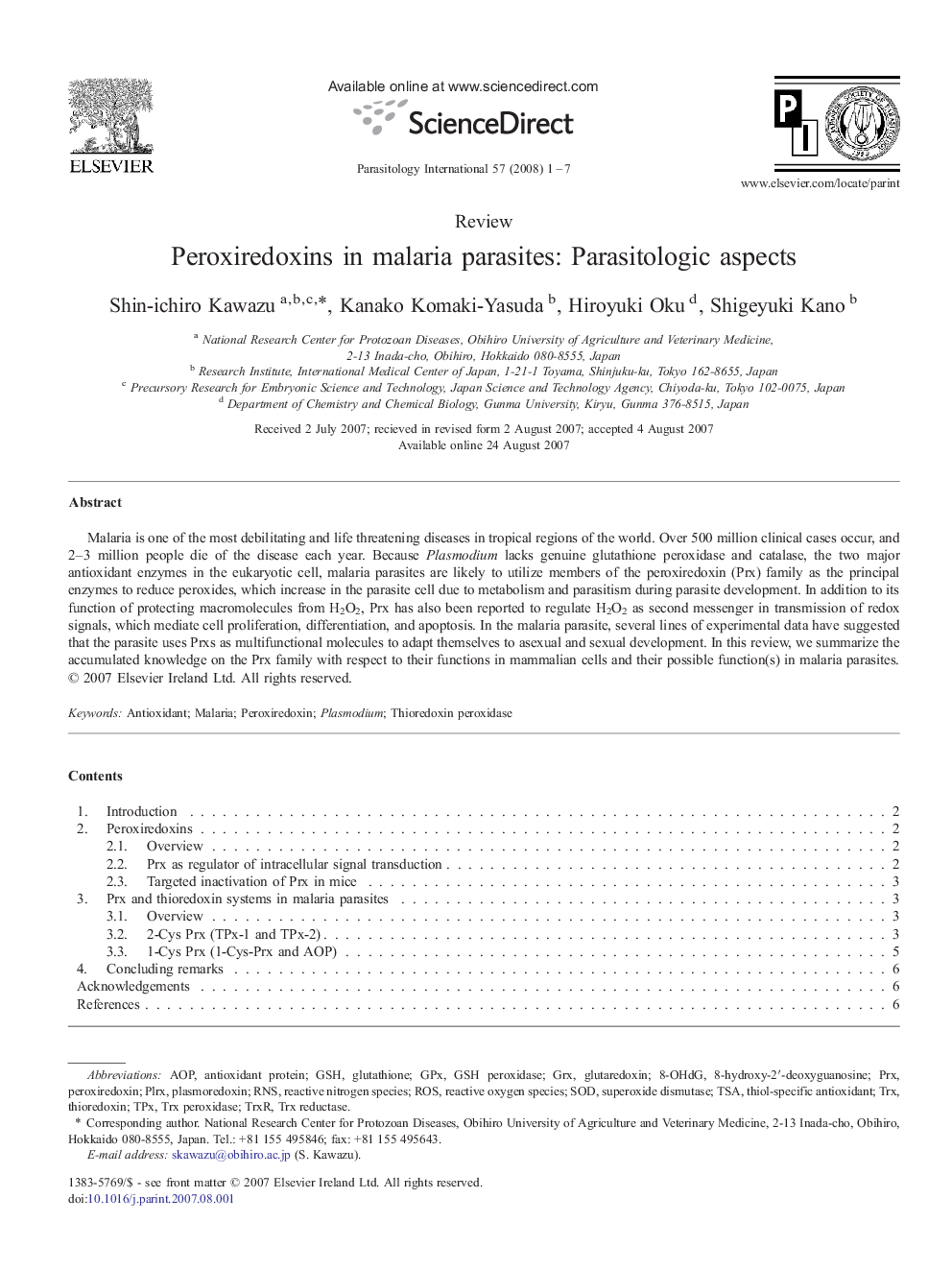| Article ID | Journal | Published Year | Pages | File Type |
|---|---|---|---|---|
| 3418226 | Parasitology International | 2008 | 7 Pages |
Malaria is one of the most debilitating and life threatening diseases in tropical regions of the world. Over 500 million clinical cases occur, and 2–3 million people die of the disease each year. Because Plasmodium lacks genuine glutathione peroxidase and catalase, the two major antioxidant enzymes in the eukaryotic cell, malaria parasites are likely to utilize members of the peroxiredoxin (Prx) family as the principal enzymes to reduce peroxides, which increase in the parasite cell due to metabolism and parasitism during parasite development. In addition to its function of protecting macromolecules from H2O2, Prx has also been reported to regulate H2O2 as second messenger in transmission of redox signals, which mediate cell proliferation, differentiation, and apoptosis. In the malaria parasite, several lines of experimental data have suggested that the parasite uses Prxs as multifunctional molecules to adapt themselves to asexual and sexual development. In this review, we summarize the accumulated knowledge on the Prx family with respect to their functions in mammalian cells and their possible function(s) in malaria parasites.
